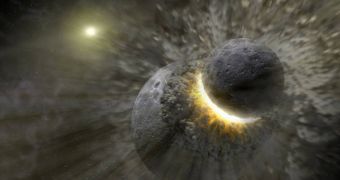For the first time, astronomers using a French telescope have managed to identify the influence of a magnetic field on the light emanating from the star Vega, in the constellation Lyra, some 25 light-years away from Earth. This star is arguably the most studied in the sky, because it's very close to our planet, and also on account of the fact that, together with Arcturus and Sirius, it's the most luminous star in the Sun's neighborhood. Vega has some pretty interesting properties, which have been unveiled over the years, but magnetic fields around it have never been discovered until now.
The science team included astronomers F. Lignieres, P. Petit, T. Bohm, and M. Auriere, from the Laboratoire d'Astrophysique de Toulouse-Tarbes, and the CNRS/Université de Toulouse, both in France. Using the high-sensitivity NARVAL spectropolarimeter instrument on the Bernard-Lyot telescope, located at the Pic du Midi Observatory, the experts have managed to record the Zeeman effect on Vega for the first time. The research is published in the latest issue of Astronomy & Astrophysics.
Vega is peculiar from many points of view. For starters, it revolves around itself in less than a day, whereas our Sun does so in about 27 days. It's ten times younger than our star, but twice as massive, and it also has flattened poles, on account of the fact that it spins so fast. This causes massive temperature fluctuations between its polar and equatorial regions, of up to 1,000 degrees Celsius. Additionally, the large dust ring that surrounds the star has inhomogeneities that suggest planets may revolve around it.
In the new study, the French astronomers used the telescope to look at the polarization that the light coming in from the star had. The sensitive NARVAL instrument was able to pick up slight magnetic variations on its surface, in a highly expected find. For decades, experts have been trying to discover these magnetic fields, as their source – charged particle motions inside the celestial body – is also present on our Sun and on our planet as well. But, until now, no one had any idea how a magnetic field of such a massive star would look like, as mathematical models never yielded conclusive results.

 14 DAY TRIAL //
14 DAY TRIAL //